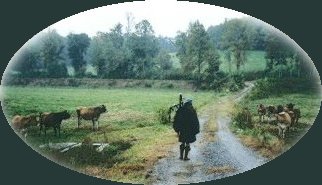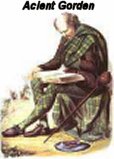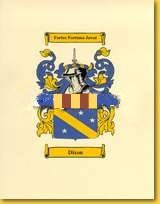|
Welcome
This
page is dedicated to our friend
Brayn (Sir
Big B 1)
A
Scottsman.
 

The
plaid background you see here is know as a tartan. It is the tartan for the sir
name Paton, which is Sir Big's last name. This name is steeped in the Scottish
culture.
|
|

The Paton Tartan
Discovered in 1993 at P and J Haggart, weavers in Aberfeldy.
It was possibly designed by the late Mr John Robertson around the 1930's,
but the sample appears to have been woven in 1952.
The Paton family associated with the tartan come from Aberdeenshire.
Apart from the red stripe this sett resembles the Gordon of Abergeldy
previously known as Ancient Gordon.
The source of tartan 2128 was: P and J Haggart, Aberfeldy

Brief History of the Tartan
The Highlander of old (pre-1746) would often have worn the feileadh mhor,
Gaelic for a large piece of woollen tartan material wrapped round the body, belted at the waist and pinned over the shoulder. It no doubt also served
as a blanket while campaigning -

the word 'plaid' is the Gaelic plaide
meaning blanket. A sensible garment which could give warmth or be worn lose with sword arm free. Origins may lie with the ancient Roman or Celtic
tunic. In fact both recent Highlanders and ancient Celts also worn tight
trousers - truis. These were particularly popular on horseback!
Exactly when the fealeadh beg (filibeg), the tailored version worn from waist to knee, came into existence is open to debate. One suggestion is
that an Englishman in charge of an iron smelter at Invergarry around 1730, Thomas Rawlinson, suggested that his workforce would fare better at their
work if the dispensed with the upper part of their garment and worn what we would describe as a kilt. The word 'kilt' itself, although not Gaelic,
is probably older. A Scandinavian or old English root from a verb meaning 'to hitch up and fold a garment' seems most likely.
 
 

Today's kilt can be worn, particularly by pipers, with a plaid - a long piece
of tartan wrapped round the upper body which, along with the kilt, are a modern version of the full feileadh mor of past times. Worn with jacket or
doublet, sporran, Scottish brogue shoes, hose and sgian dubh.
After the battle of Culloden in 1746, traditional Highland Dress was banned along with tartan from 1746-82. However Highland regiments were
being formed in the Government army and most of these adopted the kilt and a tartan as part of their uniform. From this martial background comes the
style of today's Highland Dress.
When George IV visited Edinburgh in 1822, Full Highland Dress was worn by almost everybody including King George himself thanks to the efforts of
Sir Walter Scott. The kilt became quite definitely the distinctive national dress of Scotland
Tarnan Weaving in Highlands Life
Originally the only recording activity would be similar to those in
other cultural activities such as musicians and storytellers.
Patterns would spread by diffusion according to interest and popularity.
Recording would be through memory, cloth samples and possibly threads tied to sticks (used warp beams). Types of tartan would not exist,
and the local wool and dyes available would limit the ambition of a weaver and wearer to certain colors.
Rescuing Tartan from Extinction
After the rebellion of Charles Edward Stuart, Highland expression
and the Tartan in particular was prohibited by law. The growing Highland Regiments were amongst the few allowed to wear it, largely in new patterns.
Weaving became commercial at Wilson's of Bannockburn where fortunately
many older designs survived on their books. As tartan became legal, the gentry responded to the impending loss of Highland traditions
and sponsored a number of institutions, fashions and research activities that coincided with a burgeoning Romantic movement which was driven on by
Sir Walter Scott's writing.
Not only were many traditional tartan designs "saved" through these
recordings but also many invented patterns, new colorings and new concepts such as Clan Tartans arose. Most traditional tartan patterns
became fixed and named at this time.
The
Paton Coat of Arms

Inspiration
by Beverly Graphics by Grandville


|